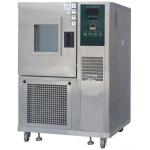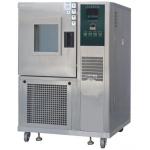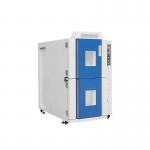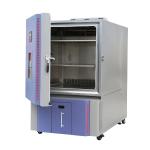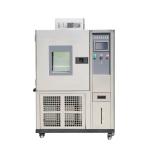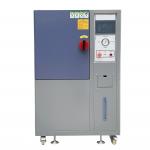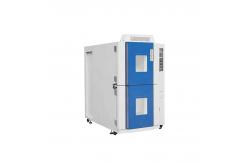The High - Low Temperature Test Chamber represents a paragon of
precision and functionality in the realm of environmental testing
equipment. Meticulously engineered, it is exquisitely designed to
meet the exacting demands of evaluating aerospace products, an
extensive spectrum of electronic components, and a diverse range of
materials. This chamber has the unique ability to generate and
maintain highly controlled high - temperature, low - temperature,
and humid environments with exceptional accuracy.
In the aerospace domain, where the utmost reliability is not just a
desideratum but an absolute imperative, the High - Low Temperature
Test Chamber assumes a pivotal role. Manufacturers can subject
critical aerospace components, including state - of - the - art
avionics systems, high - performance engine parts, and advanced
structural materials, to extreme thermal conditions. Given the
significant temperature differentials experienced during flight at
varying altitudes, this testing is crucial for guaranteeing that
these components operate with unwavering precision and integrity
throughout the entire flight envelope. Rigorous testing within the
chamber helps to pre - emptively identify any potential issues that
could compromise the safety and efficiency of aerospace vehicles.
For the electronics industry, which is characterized by rapid
technological advancements and a relentless pursuit of
miniaturization and improved performance, the High - Low
Temperature Test Chamber is an indispensable asset. Semiconductors,
which form the backbone of modern electronics, circuit boards that
integrate complex electronic circuitry, and sensors that enable a
plethora of applications, are all exposed to the chamber's
precisely regulated temperature and humidity conditions. By
subjecting these components to such controlled stressors,
manufacturers can effectively detect latent design flaws,
susceptibility to thermal cycling, and weaknesses in material
interfaces. This in - depth analysis empowers them to implement
targeted improvements, thereby enhancing the overall quality and
reliability of electronic devices. Whether it is a consumer -
facing smartphone that must endure a wide range of environmental
conditions or a mission - critical industrial control system, the
insights gleaned from testing in the High - Low Temperature Test
Chamber are instrumental in ensuring product longevity and
consistent performance.
Materials science also benefits substantially from the capabilities
of this advanced test chamber. Polymers, known for their
versatility and wide - ranging applications, metals that are prized
for their strength and conductivity, and composites that combine
the best properties of multiple materials, can all be
comprehensively evaluated. By subjecting these materials to a broad
gamut of temperature and humidity profiles, researchers and
manufacturers can accurately predict their long - term mechanical,
chemical, and physical performance. This predictive ability is of
incalculable value to industries such as automotive, where
materials must withstand the rigors of daily use and varying
weather conditions; construction, where materials are exposed to
the elements over extended periods; and energy, where materials
need to perform optimally in harsh operating environments.
